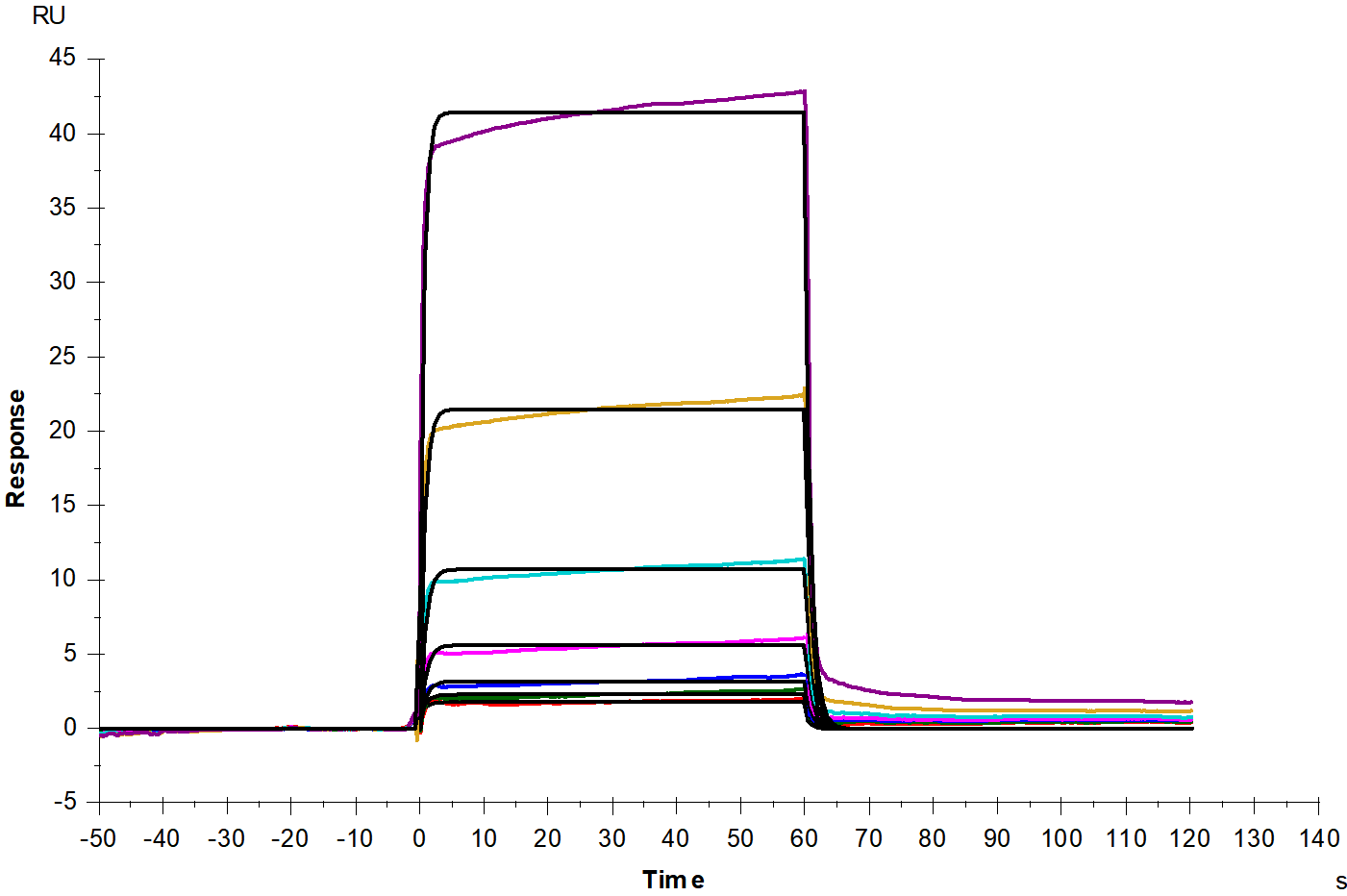Leu23-Gly241, with C-terminal 8*His LEVSESPGSIQVARGQPAVLPCTFTTSAALINLNVIWMVTPLSNANQPEQVILYQGGQMFDGAPRFHGRVGFTGTMPATNVSIFINNTQLSDTGTYQCLVNNLPDIGGRNIGVTGLTVLVPPSAPHCQIQGSQDIGSDVILLCSSEEGIPRPTYLWEKLDNTLKLPPTATQDQVQGTVTIRNISALSSGLYQCVASNAIGTSTCLLDLQVISPQPRNIGGGGSHHHHHHHH
32-35kDa
PBS, pH7.4
Reconstitute at 0.1-1 mg/ml according to the size in ultrapure water after rapid centrifugation.
· 12 months from date of receipt, lyophilized powder stored at -20 to -80℃.
· 3 months, -20 to -80℃ under sterile conditions after reconstitution.
· 1 week, 2 to 8℃ under sterile conditions after reconstitution.
· Please avoid repeated freeze-thaw cycles.
1. Suzu S, Hayashi Y, Harumi T, Nomaguchi K, Yamada M, Hayasawa H, et al. Molecular cloning of a novel immunoglobulin superfamily gene preferentially expressed by brain and testis. Biochem Biophys Res Commun (2002) 296(5):1215-21.
VSIG3 (V-set and immunoglobulin domain containing 3) is a member of the immunoglobulin superfamily (IgSF), which is also called the immunoglobulin superfamily 11 gene (IgSF11), and it is highly expressed in the brain and testis. Mature human VSIG3 consists of a 219 amino acid (aa) extracellular domain (ECD) that contains two tandem Ig-like domains, a 21 aa transmembrane segment, and a 169 aa cytoplasmic domain. The function of VSIG3 is to stimulate cell growth through homophilic interactions. In clinical, the VSIG3 has been reported to as a novel target for cancer immunotherapy of gastrointestinal and hepatocellular carcinomas. In addition, VSIG-3 is also a ligand of B7 family member VISTA/PD-1H and inhibits human T-cell functions through a novel VSIG-3/VISTA pathway.

1μg (R: reducing conditions, N: non-reducing conditions).

Protein A Chip captured B7-H5/VISTA Fc Chimera Protein, Human (Cat. No. UA010061), can bind VSIG3/IGSF11 His Tag Protein, Human (Cat. No. UA010564) with an affinity constant of 5.26μM as determined in SPR assay.